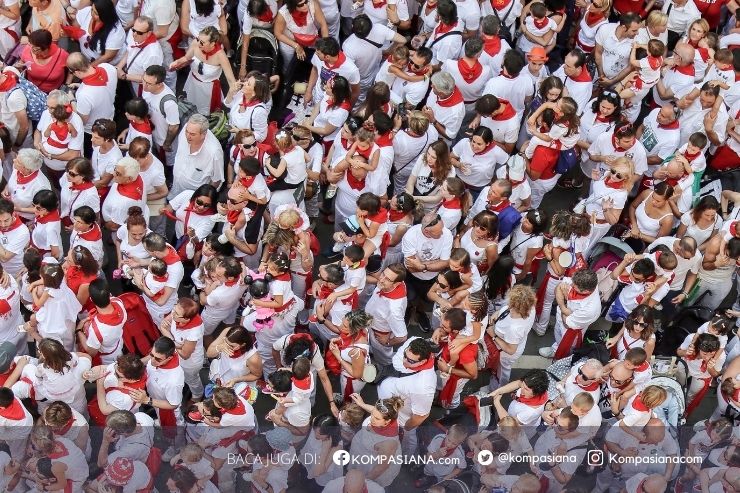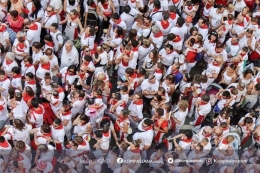During my final year in Universitas Gadjah Mada, A group of sophomores invited me to share my unfinished undergraduate final paper in a small forum. This forum discussed about the viability of 1965 issue within Indonesian historiography. Majority of organizers argued that such issue is important to be discussed since it is a “bloody and abstruse” period within Indonesian history.
When it came to the d-day, nothing was surprised me more than how the organizers arranged the discussion. After expressing courtesy words, I threw a straight comment on why any discussions about this topic should be arranged this way. Dim light, security concerns, and advise to talk in low volume. Despite the fact that majority of Indonesians still hesitate to talk about 1965, I found how organizers perceived a proper ambience of the discussion was more thought-provoking rather than my undergraduate thesis.
After releasing both of his masterpieces, Joshua Oppenheimer, a well-known director of “The Act of Killing/Jagal”and “The Look of Silence/ Senyap” claimed to Al-Jazeera that he has transformed the way Indonesians understand their history. Despite postcolonial critics on how Indonesians confides to foreigner more than local scholars and artists, Oppenheimer’s claim was reasonable. Triggered by both movies, numerous institutions throughout the country held movie screenings, which most of the times was subsequently followed by discussions.
This “1965 wave” confounded the youth on how they should perceive 1965. Spontaneous and self-prescribed innocent testimonies of death squad members recorded by Oppenheimer are in contrast with heroic and patriotic narrative in history textbooks. This contrast dragged Generation Y into a grey zone between monopolized historiography of New Order and post-1998 narrative which contested the narrative of national history.
On the other hand, this wave also roused security authorities’ phobia about the ghost of leftist movement. Namely two cases took place in Yogyakarta: local police backed up by mass-organizations forced two movie screenings in UGM and another held by Aliansi Jurnalis Independen to be terminated. In these two cases, local police argued that Oppenheimer’s movies will instigate a new wave of communism among the youth who are oblivious on “what really happened” in 1965.
Triggered by the news on how security authorities reacted, curious Generation Y audiences captured images on how New Order Indonesia expressed their communist-phobia. This real life reenactment provides more detail rather than any history books could describe. Moreover, it can be seen as a more pertinent “performance” compared to the well-known propaganda movie of “Penumpasan PengkhianatanG30/S PKI” (Treachery of G30/S PKI).
Security authorities’ reactive actions towards the screenings and discussion in some ways significantly contribute on constructing topography of terror. Topography of terror is actually a museum in Berlin dedicated to the victims of forced labor. In this commemoration space, Topography of Terror tried to replicate the horror which experienced by those who were detained and tortured inside the concentration camp. The replication is constructed by exhibiting pictures, testimonies, and memorabilia on site of formerly SS and Gestapo headquarter.
Similar concept can easily be found in Indonesia’s monument of Lubang Buaya, a small abandoned pit where seven army officers were buried during the attempted coup of 1965. Fake bloods stained around the abandoned well and diorama of torture was presented for visitors in order to reconstruct “the horror and barbarism” of communist during the time. However, together with the advent of new media on learning history such as Oppenheimer’s movie, topography of terror within this context finds bigger and more relevant space: the society itself.
As how topography of terror museum works, it only offers visitors two roles: whether they want to see every exhibition as a “loyalist of Pancasila” or as ‘infidel-evil’ communist. Topography of terror only offers a grey zone for observation “during the tour”. By the time the visitors step out from the museums, options are on their hand. Nonetheless, offered options are merely rhetorical; “topography of terror” anywhere in the world already has a single answer which every visitor can guess even prior to the tour.
The same case happens when topography of terror takes place in real life, society will divide them into roles which have always been dictated by museums and court history. Unfortunately, the majority of inquisitive Generation Y would position themselves in an opposing side with New Order.
This option emerged as a way to detach them from national historical narrative which has been invalidated by Oppenheimer movies. Sadly, most of them would also disentangle themselves from the context of learning history in 21st century and ride a time machine back to the era when dim light and hidden place on discussing about 1965 were mandatory.








